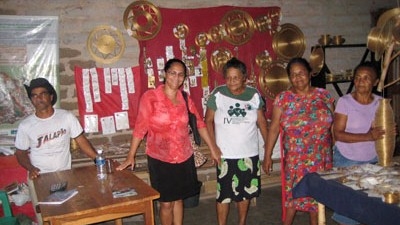Challenge
While the situation had progressively improved since the State creation in 1988 thanks to regular high growth rates, Tocantins was still among Brazil’s poorest States in the early 2000s. Its GDP per capita was below the national average as well as its Municipal Human Development Index.
The State had a large number of poor related to the overall population and poverty was worse in rural areas, 68% of the rural population living under the poverty line. Two vulnerable segments of the rural poor were also present in the State, indigenous people and the Quilombolas (communities of descendants of slaves).
Many rural dwellers, often scattered in large territories with low density areas, were isolated part of the year due to impracticable roads in the rainy seasons. With rising economy and the development of agriculture, the State which belongs to Brazil’s North region, was starting to face environmental challenge for sustainable development.
Approach
The Project was based on a combination of three components aimed at strengthening the administration, both State wide and at the local level, mainstreaming environmental management and improving rural transport in the State.
The Project widely relied on participatory processes (in the definition of local development agenda, the prioritization of road interventions etc.) with the ultimate goals of fostering empowerment of rural population and building social capital. It was accompanied by a sound strengthening of the State administration capacity.
The road interventions under the physical component were expected to act as a catalyst for the development of the target population, by making municipal accesses all-weather/all-year round passable, thus improving accessibility to markets, job opportunities and social services.
The Project was also expected to create a sustainable framework for the State’s regional development through land use management and biodiversity protection to foster a regionally balanced and socially and environmentally sustainable development.
Results
The Project funded numerous studies/institutional strengthening activities: municipal and regional development agendas, de-concentrated State administration in regions and strengthened planning capacity, pilot local development initiatives for fragile populations (Quilombolas), strengthened land use planning and environment protection capacity (support to the policy on biodiversity, water resources management etc.), considered best practice by the Bank.
It also contributed to improve the conditions of 5,000 km of rural roads by eliminating critical spots and improving 144 km of state road conditions. An impact evaluation of the Project was executed which demonstrated increased agricultural jobs and households’ income as well as overall improved accessibility to main city centers and services, notably to education for girls.
The Project was successful in:
- Adopting an integrated approach in which transport serves as a platform for transformation of the communities’ local development;
- Adopting a bottom-up approach to foster rural communities empowerment;
- Promoting better social inclusion and enhanced appropriation of economic opportunities;
- Fostering the state management capacity in environment to ensure the sustainable use of natural resources and the protection of fragile ecosystems;
- Promoting a strong ownership of the Project by final beneficiaries and State counterparts, beyond political agendas.
Bank Contribution
The Bank provided a US$60 million loan for this US$100 million operation. It financed US$42.7 million for rural transport improvement, US$6.5 million for participatory planning and management of regional and municipal development, and US$10.2 million for an environmental management.
Partners
The financiers of the operation were the Bank (60%) and the State (40%). The project was implemented with a strong partnership among the key executing agencies: the State's Secretary of Infrastructure and Secretary of Planning, 67 municipalities in the eastern part of the State, and the World Bank. The Project though has been articulated with a national development programs as well as the GEF Cerrado initiative.
Moving Forward
A new project, the Tocantins Integrated Sustainable Regional Development, has been prepared (P121495, approved by the Bank in July 2012) prolonging the partnership with the Bank. This US$375 million multi sector operation including a US$300 million loan, largely builds on the success of the operation while expanding Bank support to other areas of the State development agenda, including: education, local development and agriculture, reform of the administration.
Beneficiaries
The Project’s main target was the rural communities established in the four poorest regions on the Eastern part of the State. These four regions, which together make up half of the State’s area, were characterized by scarce and remote settlements. A half of the municipalities of those regions were, at the time of appraisal, among the lowest-IDH municipalities in the State.
About 63,000 rural dwellers directly benefited from improved accessibility thanks to the Project and several tens of others benefited from other specific investments and support for local development. The impact, as recalled above, while still early to measure, seems to have been positive.
